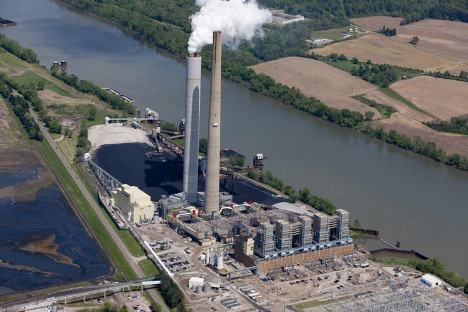Michigan regulators recently issued a warning to Indiana Michigan Power (I&M), the main electric utility for southwest Michigan: I&M has failed to show that it has been trying to get a good deal for its customers on power it purchases from an affiliated Ohio company that is a big coal-fired electricity generator, and so the utility may not be able to charge customers for the costs of these power purchases.
The evidence for this warning came from testimony sponsored by CUB, as well as the Sierra Club. This expert witness testimony consisted of analysis that showed, among other findings, that I&M’s agreement to purchase power from the affiliate company Ohio Valley Electric Corp. (OVEC) is costing I&M customers up to $29.4 million a year. That’s how much I&M is paying for the power in excess of what it reasonably could alternatively get for power on the wholesale market.
“The power I&M purchased under the [agreement with OVEC] is extremely high cost by any reasonable measure,” Synapse Energy Economics Senior Principal Devi Glick wrote in her testimony on behalf of CUB and the Sierra Club.
The power I&M is buying from OVEC is also much dirtier than what Michiganders now rely on for electricity generation. OVEC operates two large coal-fired power plants built in the 1950’s: the 1.3-gigawatt Clifty Creek coal plant in Madison, Ind., and the 1.1-gigawatt Kyger Creek coal plant in Chesire, Ohio. Michigan utilities have been phasing out coal-fired power, with coal now making up around 23% of the state’s electricity generation, much lower than in years past.
The testimony came in the case before the Michigan Public Service Commission (MPSC) to determine the power supply cost recovery (PSCR) factor for I&M for calendar year 2024. The PSCR factor is a charge that appears on customer bills to cover the utility’s costs of obtaining power. On Oct. 10, the MPSC ordered that I&M’s PSCR factor be approved but issued a warning that I&M may not be able to charge customers to recover the costs of the power it purchased from OVEC “without evidence demonstrating good faith efforts by [I&M] to minimize the costs of the Intercompany Power Agreement, which may include renegotiation of the contract.”
It’s particularly important to be skeptical of any deal between I&M and OVEC because of the way the two companies are interconnected. I&M is a subsidiary of American Electric Power (AEP). AEP, in turn, is the largest shareholder of OVEC. Therefore, the question arises: will I&M seek the lowest price it can from a company with which it is affiliated? An administrative law judge reviewed the evidence and found that “the evidence of I&M’s negotiation efforts presented in this case is limited to a single letter sent by I&M to OVEC” [emphasis added]. What’s more, by 10 months after this letter, I&M still had not shown that its outreach led to any kind of renegotiation to lower the price of the purchased power. The MPSC agreed with the administrative law judge, writing in the order that “the evidence in this case showing I&M’s attempts to renegotiate the OVEC contract is sparse.”
There is already a related pending case. I&M has filed for reconciliation of its 2023 PSCR factor with the actual power costs it incurred in that year. CUB, along with the Sierra Club and Attorney General Dana Nessel, is sponsoring testimony, again from Glick, in this case, arguing that the MPSC should disallow I&M from collecting $5 million from its customers. That amount represents the difference between what I&M charged its customers through the PSCR factor for power purchased from OVEC and what it would have cost to purchase that power on the wholesale market in 2023.

